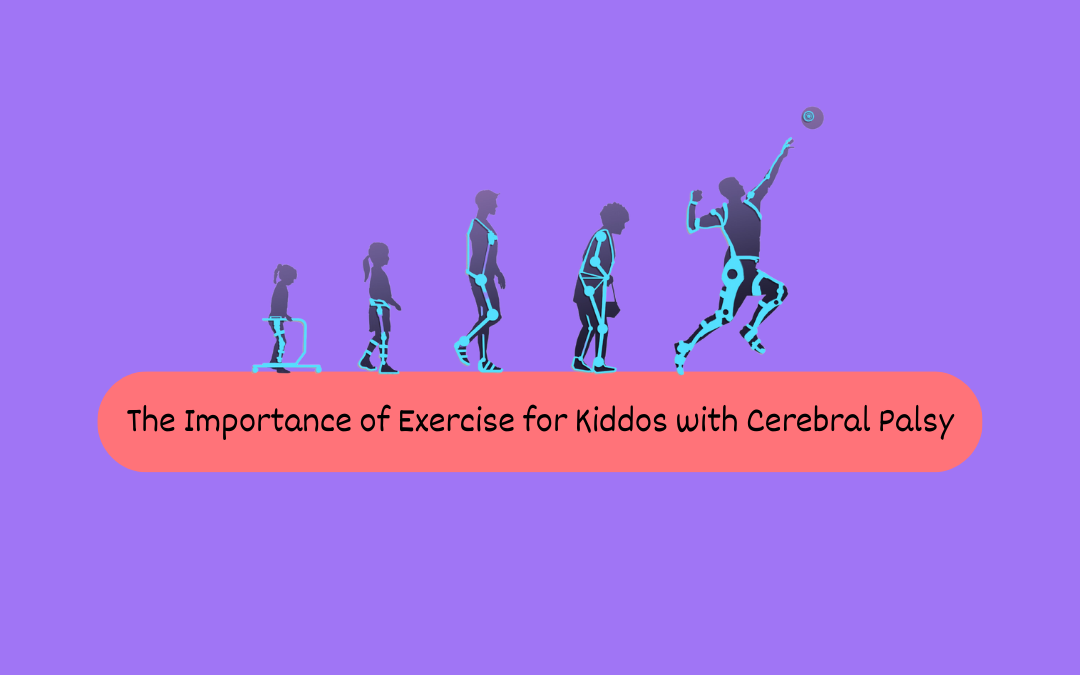Cerebral palsy (CP) is a neurological disorder that affects muscle tone, posture and movement. Kiddos with CP often have difficulty with coordination and mobility. These difficulties can make it challenging for them to take part in physical activities. Exercise is crucial for children with cerebral palsy, there are numerous physical and mental benefits that can improve overall health and quality of life.
Physical Benefits of Exercise for Children with Cerebral Palsy
Improved Strength and Muscle Tone
Children with CP typically have weaker muscles. Having weakened muscles can make it difficult to perform daily activities like standing, and walking. Regular exercise strengthens their muscles, improves muscle tone, and increases endurance.
Increased Range of Motion
Kiddos with CP may also have limited range of motion, which can lead to contractures or muscle tightening. Exercise can improve joint flexibility and prevent contractures.
Enhanced Coordination and Balance
Cerebral palsy affects the part of the brain that controls movement and coordination. Exercise can help improve coordination and balance, making it easier for kiddos to move around and participate in physical activity.
Improved Bone Health
Kiddos with CP are at higher risk of developing osteoporosis due to reduced weight-bearing activities. Exercise can help to improve bone density, reduce the risk of fractures or breaks, and promote better overall bone health.
Mental Benefits of Exercise for Children with Cerebral Palsy
Improved Self-Esteem and Confidence
Regular exercise can improve self-esteem and confidence in kiddos with CP. This comes from increased independence and from observing their own improvements in physical activities.
Reduced Anxiety and Depression
Kiddos with CP may struggle with anxiety and depression due to the challenges they face in their daily lives. Exercise typically helps with mental health challenges.
Increased Social Interaction
Exercise often provides opportunities for kiddos with CP to interact with their peers and participate in group activities. This improves social skills and reduces feelings of isolation.
Walking and Cerebral Palsy
Walking is an important part of daily life. It is an important goal for many kiddos with CP. However, walking is a challenge due to weakness, balance issues, and spasticity.
Physical therapy is often used to help children with cerebral palsy learn to walk. Therapies include exercises to improve strength, range of motion, and balance.
In addition to physical therapy, regular exercise can help children with cerebral palsy improve their walking abilities. Exercise can help to improve muscle strength and flexibility, reduce spasticity, and improve balance and coordination.
Some specific exercises that can help children with cerebral palsy improve their walking abilities include:
Strengthening and Stretching Exercises
Strengthening exercises can help to improve muscle strength and tone, which are essential for walking. Examples of strengthening exercises include leg presses, squats, and calf raises. Stretching exercises can help to improve flexibility and range of motion, which can help to reduce spasticity. Examples of stretching exercises include hamstring stretches, hip stretches, and calf stretches.
Balance and Coordination Exercises
Balance and coordination exercises improve overall stability which benefits their walking. Examples of balance and coordination exercises include standing on one leg, walking on a balance beam, and stepping over obstacles, among other things.
Learn more about the Trexo Home device.


Recent Comments